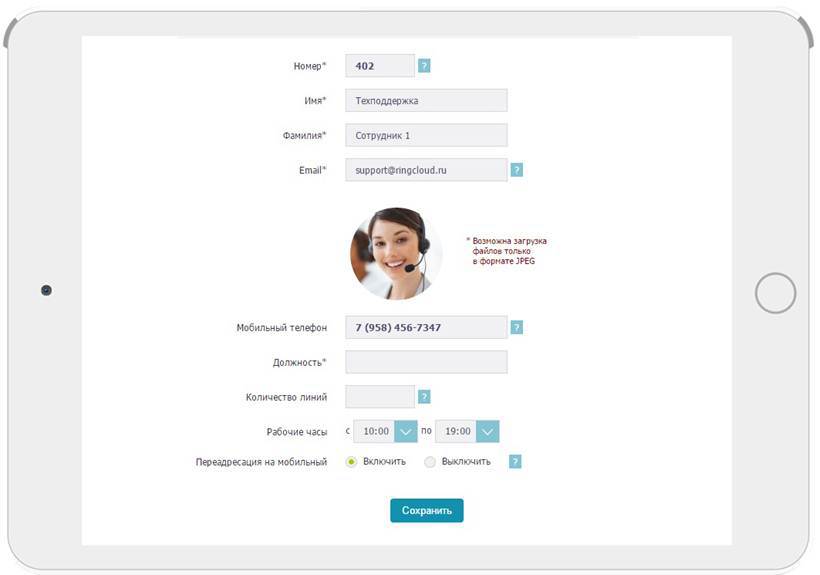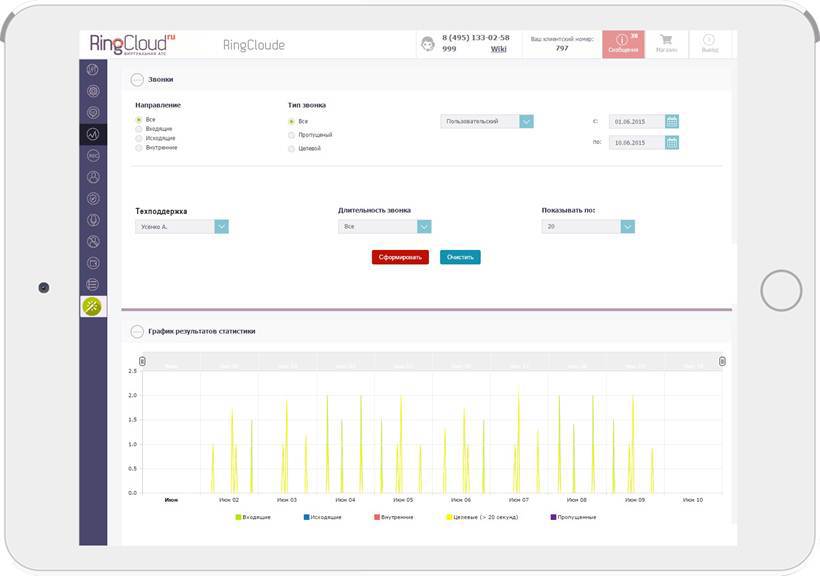Case: We organize the work of employees remotely

The virtual PBX RingCloud continues to publish cases about how telephony can help in organizing business processes for different areas of activity.
Earlier we talked about how telephony can help owners of online stores.
Now I am the owner of an online store (Part 1)
Now I am the owner of an online store (Part 2)
Now I am the owner of an online store (Part 3)
')
And how to turn a freelancer into a serious company with the help of telephony
We teach freelancers to lie
Today, we would like to talk about how telephony can help remote employees in a company.
At a time when the Internet has reached a large development, and the document flow is performed electronically, people have the opportunity not to go to work. It is “not going to the office”, because you’ll still have to work. A remote employee is convenient, cost effective, and affordable; they have already written a lot about this. After all, as a matter of fact, the boss doesn’t care where his subordinate is: on the beach, in the park, on the sofa - the main thing is that the volume of tasks should be completed completely and efficiently. At the same time, it is possible to significantly reduce expenses in the payroll list, which, you see, is pleasant in a crisis. You, as an employer, do not need to decide where to put such an employee, and the employee does not need to think about how he would not be late for work.
It seems to be all right, but how can an employer organize the work of such an employee? This is where the main difficulties arise, which employers sometimes do not know how to deal with, in connection with which they transfer personnel to the office. We will try to answer how to organize the activities of the remote worker and make it so that this employee would be comfortable and convenient to work. We will talk about what is close to us, namely about telephony .
First, let's see what are the remote employees.
Remote workers can be divided into two categories on a temporary basis. For example, a sick worker who temporarily works from home, and after recovery, returns to the office. And an employee who works remotely on an ongoing basis, regardless of his movements and diseases.
To begin, consider the simplest case when an employee is working on a remote site temporarily. Imagine that you have only one person in support. And so, the very day comes when this employee for one reason or another could not go to work. Of course, you can simply not receive calls that come to the number of those support. But we would not advise such an approach. Do not have time to look back and see the sparkling heels of your customers. The problem is really small here. You just need to enable redirection to the mobile technical support officer.

How is the incoming call processed in this case?
The call will be sent to the employee’s landline phone, and if no one picked up the phone, it will be transferred to the mobile phone that you indicated. Why you should not send a call immediately to your mobile, without first calling your work phone?
First, there are often employees in the office who can pick up the call to advise the client on his question. In our example, these can be developers.
Let's consider the same example, but from the part of the employee of those support. The reasons for working remotely can be different: one thing, when you are lying with a temperature of forty, another thing, when you have taken time off, to stay at home with a child who is ill. That is why we give the opportunity to the employee who takes the call to make a choice: to accept the call or not to accept. We understand that there are situations when it is better not to respond to the client than to respond. Think about it yourself, what quality of consultation can your employee render if he is on the subway or is at a temperature under forty at home? But, after all, an unanswered call means that the client’s problem has not been solved, which means that the client is not satisfied or has he completely left? This is not entirely true. If you do not accept the call, then the caller is offered to leave a message that will be sent to the mail.
Now let's consider the case when an employee works remotely all the time, using the same technical support as an example. Does an employee in support always have to sit in the office and receive calls? No not always. You can, of course, organize the work, as we suggested above, but believe me: either the employee will run away from you, or the clients will begin to complain about the quality of communication and advice.
What to do? Actually, everything is quite simple, there are two possible solutions:
1) You buy a full-fledged IP phone for an employee
2) You purchase a budget headset and install the softphone on the employee’s computer
So let's consider all the benefits of this approach. The first thing you get is the complete integration of your employee into the existing telephone network. None of your clients will guess that the employee is not sitting in the office, but at home, or lying in a hammock in the country, well, or somewhere else, here we do not limit your imagination. The configuration scheme will look like this:

The second is that the call will be processed according to all the processing rules you create.

In our case, the call will first be received by an employee at a remote location, in the event that he is unable to answer, because at that moment he is talking, the call will be sent to the office - to another employee.
Thirdly, all calls are very easy to control, as there is a call record that you can always listen to and evaluate the quality of the consultation.

Fourth, you have complete statistics on how much your employee spoke and with whom. In this way, you can estimate how heavily loaded your employee is.

Now let's look at the organization of the work of such an employee. As we have said, the employee is fully integrated into your telephone network. His phone has a short number to which any colleague can transfer a call or call directly. If he has any questions about the consultation or any other difficulties, he can easily transfer the call to the short number of his more experienced colleague.
So let's summarize.
How to control the work of a remote employee?
1) All statistics about missed and unanswered calls can be found in the statistics
2) You can listen to call recordings to evaluate how satisfied you are with the quality of consultation of such an employee.
3) If you need to convey to the employee the essence of some task, it is not necessary to write a letter to the post office or try to explain some complicated things on Skype, just dial the short number
4) Telephony can be integrated into your CRM system, and all records will be automatically loaded into it
Tell us in the comments if you have remote employees and how you organize their work?
ps We know that a lot of film fans read us. Start picture for you;)
Source: https://habr.com/ru/post/291476/
All Articles